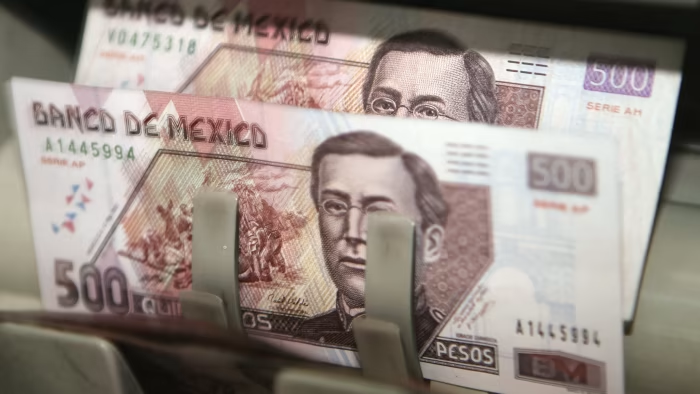The Mexican Peso (MXN) has seen a dip in value against the U.S. Dollar (USD) as global markets react to the recent re-election of Donald Trump and his anticipated economic policies.On Friday, USD/MXN continued a broader upward trend, with support observed around the 50-day Simple Moving Average (SMA) near 19.70. The Peso’s performance against the Dollar, however, reflects more than political shifts—it’s shaped by ongoing concerns about trade and tariffs, shifting interest rate expectations, and market reactions to economic data.
The Peso’s Mixed Reaction to Trump’s Re-election
Initially, Trump’s re-election generated pressure on the Mexican Peso, given his stated intentions to reinforce tariffs on Mexican goods. Mexico is heavily reliant on trade with the U.S., especially in sectors like automotive manufacturing, where any significant tariff changes could ripple across the Mexican economy. Trump’s campaign rhetoric about imposing tariffs on cars manufactured in Mexico stirred concerns among both Mexican and international investors, potentially increasing costs and reducing competitiveness for Mexican exports.
Despite this, market dynamics offered the Peso some relief. A stronger-than-expected inflation report from Mexico for October reduced speculation that the Bank of Mexico (Banxico) would aggressively cut interest rates. Higher inflation typically prompts central banks to maintain or raise interest rates, a move that attracts foreign investment due to higher returns on Peso-denominated assets.
Interest Rate Movements: A Key Factor for USD and MXN
The U.S. Federal Reserve’s recent decision to cut interest rates by 0.25% (25 basis points) has impacted both the Dollar and the Peso. Generally, lower U.S. interest rates would weaken the Dollar, making non-interest-bearing assets more attractive. While this provided a short-lived boost for MXN, the U.S. Dollar Index (DXY) regained strength following the release of positive U.S. consumer sentiment data, which edged up to 73 in early November, surpassing forecasts of 71. The robust U.S. consumer outlook suggests continued economic resilience, supporting the Dollar and offsetting the Fed’s dovish stance.
Tariff Uncertainty and MXN Outlook
Trump’s tariff strategy remains a significant concern for Mexican exports. The President has hinted at imposing hefty tariffs on Chinese vehicles entering the U.S. through Mexico, which could disrupt supply chains and slow investment. Some experts, however, argue that tariffs may not be easily enforceable due to the United States-Mexico-Canada Agreement (USMCA), which outlines specific requirements for vehicle exports.
Chinese companies remain cautious yet optimistic. Mexican consultant Luis Felipe Alcántara Pozos highlighted the potential for Chinese electric vehicle manufacturers to focus on Mexico’s domestic market, thus avoiding direct exposure to U.S. tariffs. Additionally, even if U.S. tariffs target Mexican goods, Mexico’s strategic position in Latin America presents opportunities beyond the U.S. market, potentially mitigating some adverse effects.




